Every four years – and in this case five – the world watches as the greatest athletes from around the globe compete in the Summer Olympic Games. The Olympics bring out the best competitors, and it is an opportunity for those who are merely casual sports fans to witness greatness. The Olympics are also the perfect marketing opportunity for sneaker and apparel brands, and no one has utilized this opportunity over the years better than Nike.
If a sneaker is groundbreaking in terms of design and technology, debuting that shoe on the world stage of the Olympics amplifies the influence of that sneaker more than any other marketing event. There have been plenty of great Olympic Nike sneaker moments over the years; here are the best of the best.
10. Air Jordan VII (1992)
 Images via Christie’s and unconfirmed
Images via Christie’s and unconfirmed
In terms of Olympic moments, it doesn’t get much more iconic than the Dream Team. Barcelona was abuzz to see Michael Jordan and the greatest basketball team ever assembled, and they did not disappoint. Jordan was, of course, the star of the team and wore the Air Jordan VII in a USA-themed colorway.
Featuring a #9 on the back instead of a 23, the AJVII utilized Huarache technology with a neoprene inner bootie for comfort and support. Designed by Tinker Hatfield, the AJVII was yet another bold shoe for several reasons, including the fact that there was no more visible Air-Sole unit or “Nike Air” logo.
9. Nike Air Force 180 Low (1992)
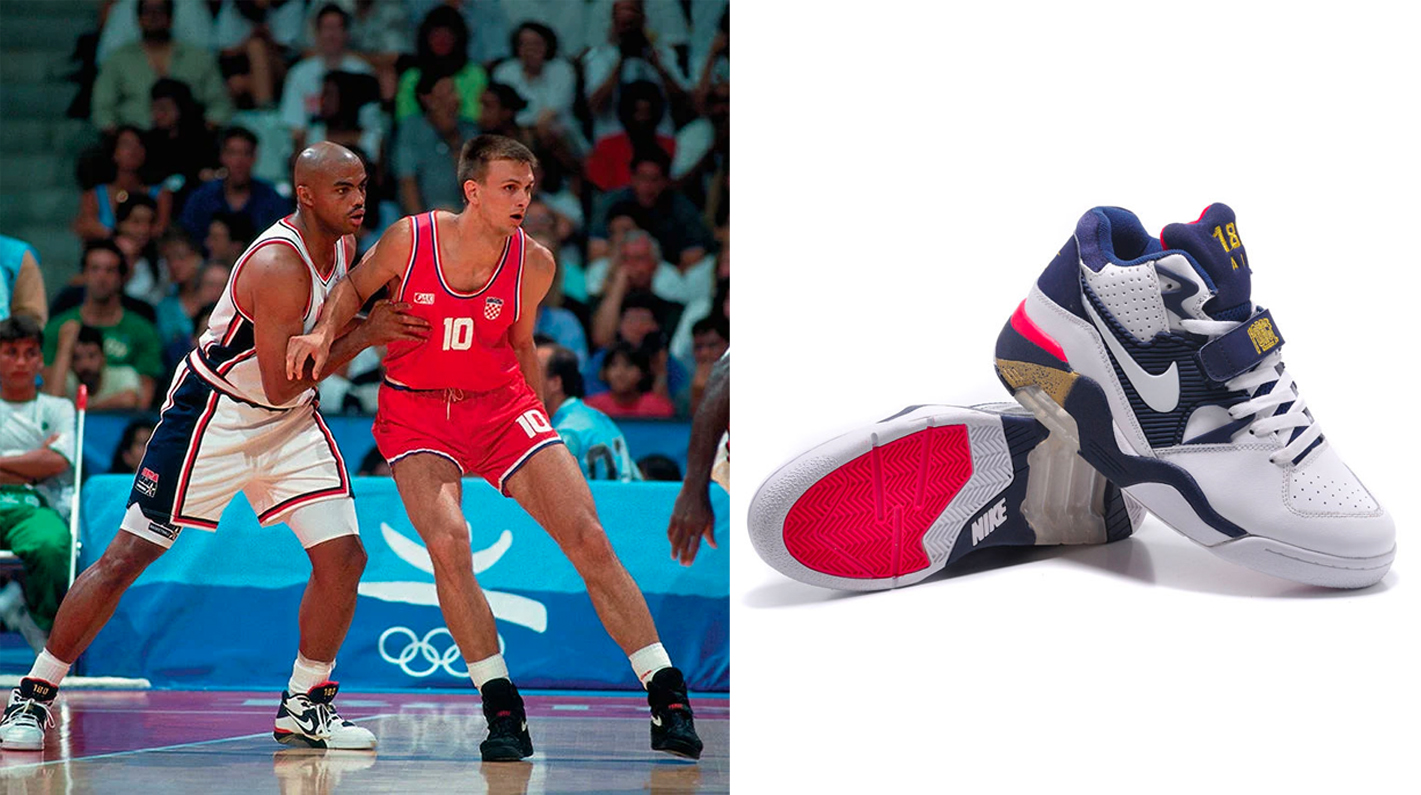 Images via NBAE and Nike
Images via NBAE and Nike
Another sneaker that stood out at the ‘92 Olympic Games was the Air Force 180 Low, famously worn by Charles Barkley on the Dream Team. Boasting 50% more Air than other models, the Air Force 180 was marketed and built for power players like Sir Charles. “Technology has always been the thing that drives, motivates, and consumes us.
The Air 180 is the product of that obsession,” stated Nike co-founder and CEO Phil Knight when the 180s were released. Barkley thrived the most on the Dream Team as the leading scorer averaging 18 points per game. He made his mark on that squad as much as anyone else.
8. Nike Air More Uptempo (1996)
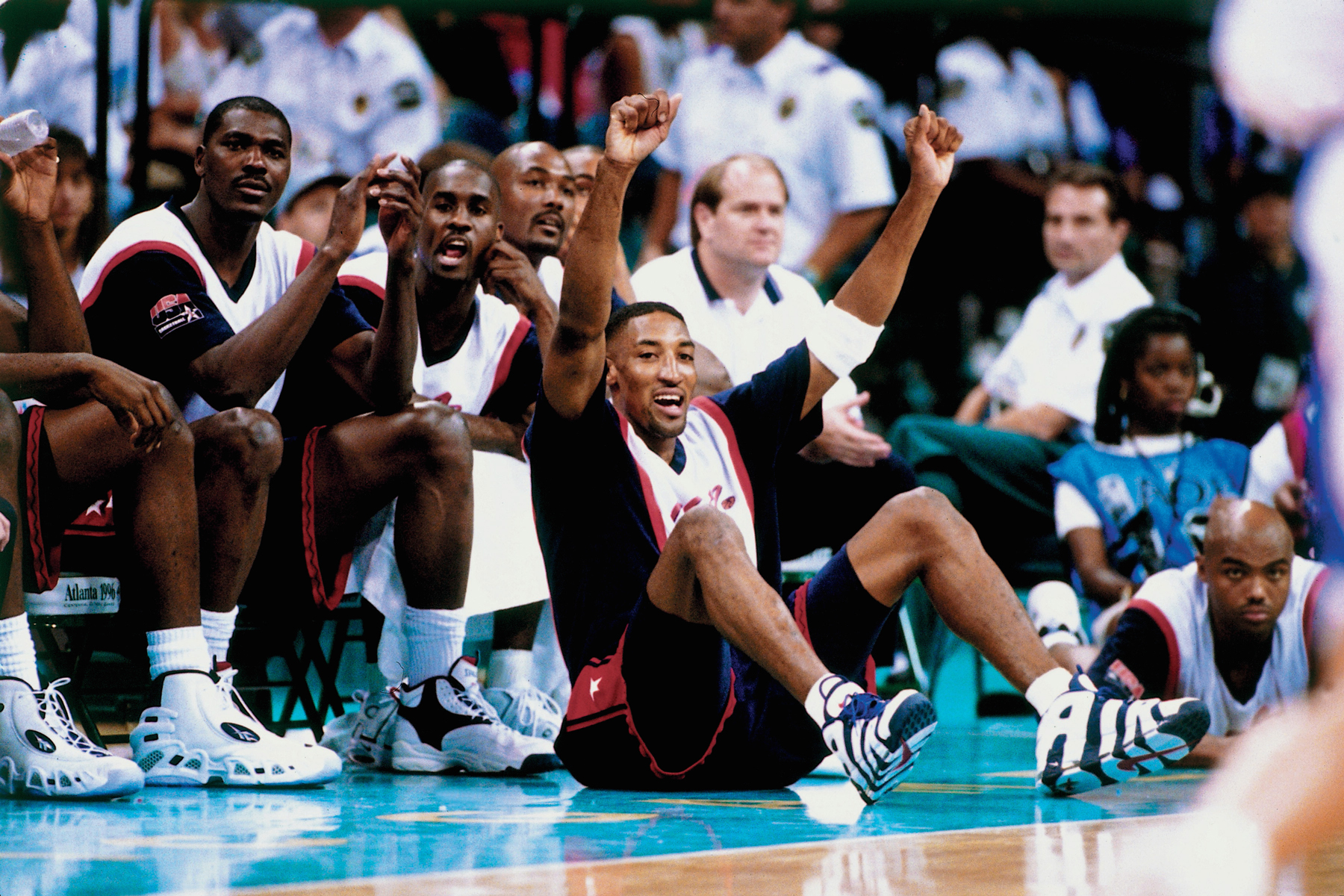 Image via Nathaniel S. Butler/NBAE/Getty Images
Image via Nathaniel S. Butler/NBAE/Getty Images
No sneaker was bigger and bolder than the Nike Air More Uptempo. Worn by Scottie Pippen and Charles Barkley while dominating during the 1996 Olympics. As the name suggested, this sneaker had more Air than its little brother, the Air Much Uptempo. Pippen rocked a navy, white and red colorway, while Barkley wore an all-white model. Designed more so for Scottie Pippen, his version had a #8 in gold trim on the heel.
Of course, Pippen had just made the black/white version famous during the ‘96 Bulls historic championship run. The Air More Uptempo, designed by Wilson Smith III, featured three performance-tuned blow-molded Air-Sole units housed in a lightweight Phylon midsole for optimum cushioning. The love for the More Uptempo continues to this day, as Nike keeps releasing it in both OG and new colorways. Now we just need the Much Uptempo to come back in the colorway Gary Payton was rocking.
7. Nike Air Zoom Flight (1996)
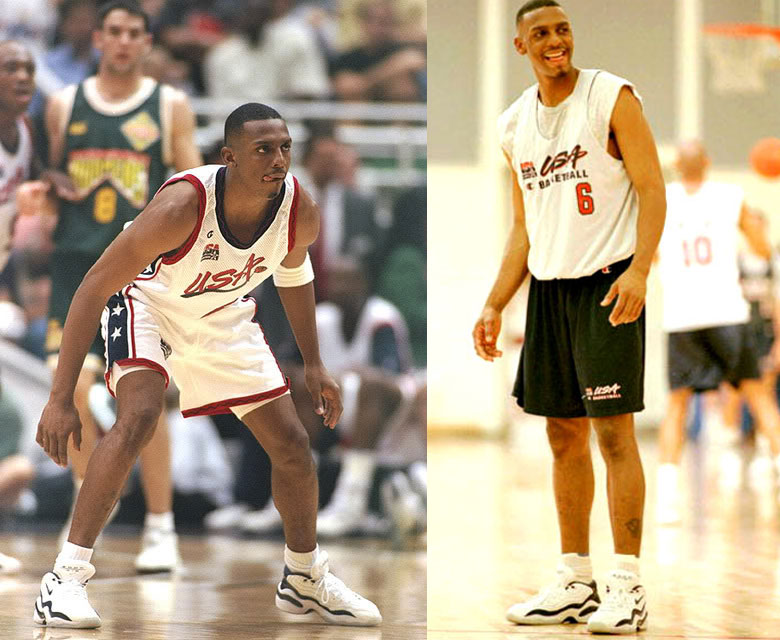 Image via unconfirmed
Image via unconfirmed
One of the most responsive sneakers ever made, Magic guard Penny Hardaway rocked the Air Zoom Flight during the ‘96 Olympic Games in Atlanta. Featuring a lightweight Durabuck upper and a full-length Phylon midsole, the Zoom Flight had Tensile-Air in the forefoot and a large-volume heel Air-Sole cushioning unit. For those who don’t know, Nike called Zoom Air Tensile Air initially before changing the name. On the way to winning the gold medal, Penny came up big in the quarterfinals against Brazil when he scored 14 points, and then again in the Final versus Yugoslavia when he chipped in 17.
6. Michael Johnson’s Gold Shoes (1996)
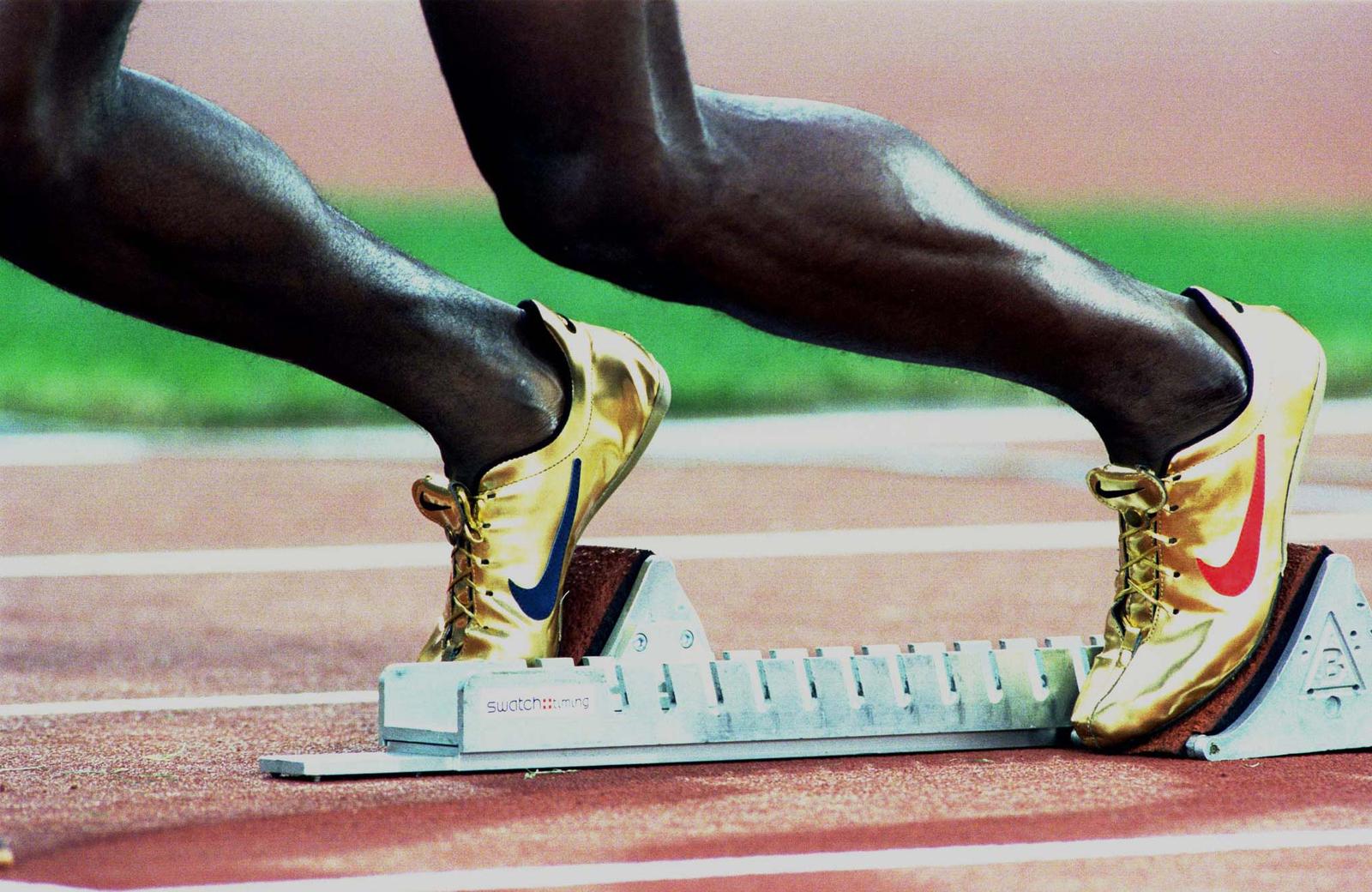 Image via Nike
Image via Nike
One of the biggest highlights of the ‘96 Summer Olympics was watching Michael Johnson run. Not only was he the first and only man to win both the 200-meter and 400-meter races, he did it while wearing gold track spikes.
Designed by Tobie Hatfield, these spikes were made of Zytel and were the lightest track spikes at the time, weighing only 3 ounces. Obviously, they were custom made just for Johnson, with the left foot a size 10.5 and the right a size 11. His pair donated to the Bata Shoe Museum and was also featured at the Rise of Sneaker Culture exhibit back in 2015.
5. Nike Shox BB4 (2000)
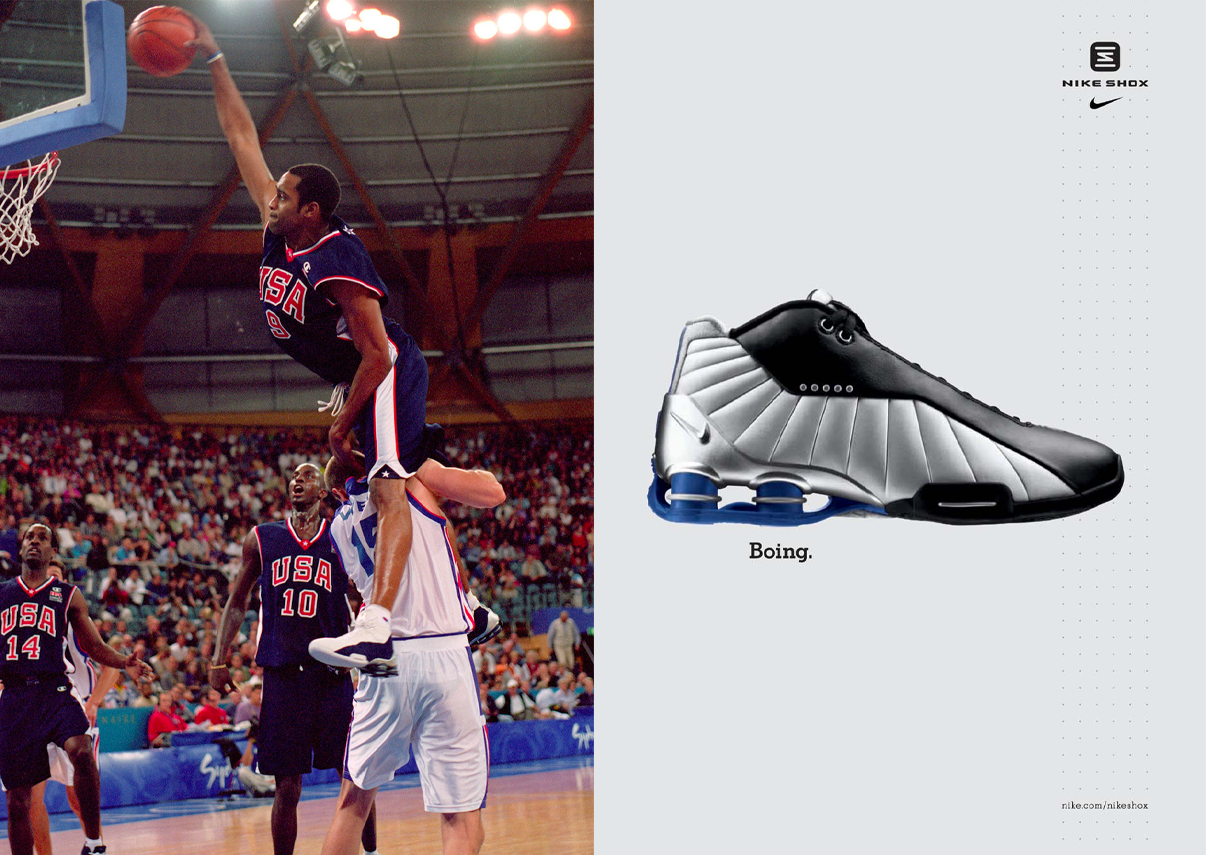 Images via Nike
Images via Nike
Sometimes Nike drops a bold new sneaker, launches their mega marketing machine, and the shoe does well. Other times, Nike drops a bold new sneaker, does the marketing thing, AND they get lucky with an iconic moment that will define the legacy for the rest of time. The latter occurred with Vince Carter and the Shox BB4 when he dunked OVER 7’2″ French Center Frederic Weis in the 2000 Olympics.
As if the first Shox basketball sneaker wasn’t revolutionary enough, the fact that newly-signed Nike superstar Vince Carter proved how great they were in front of the whole world made them a grail for many sneakerheads. Designed by Eric Avar, the Shox BB4 had a space-age concept reminiscent of a rocketship and its boosters. After his “Dunk of Death” and gold medal, Carter wore the BB4 with Toronto the following season.
4. Nike Flightposite 2 (2000)
 Images via NBAE and unconfirmed
Images via NBAE and unconfirmed
With Vince Carter on the way in with Nike, Timberwolves star Kevin Garnett was actually on his way out by the 2000 Olympics. KG wore some very memorable kicks during his time with Nike, and it was disappointing for Nike heads when he split for AND1 in the Fall of 2000. On Team USA, however, Garnett was a dominant force while rocking the Flightposite 2. He nearly averaged a triple-double during the 2000 Summer Olympics in Sydney, with 11 points and 9 rebounds per game.
KG wore 3 different colorways in the Olympics, with the white/midnight navy/blue gaze being the most popular. Part of the Alpha Project, the Flightposite 2 was packed with technology, with a hyper-thin (2mm) Foamposite upper and Lycra inner sleeve, heel and forefoot Zoom Air cushioning, internal sock plate, and a carbon fiber midfoot plate.
3. Nike Hyperdunk (2008)
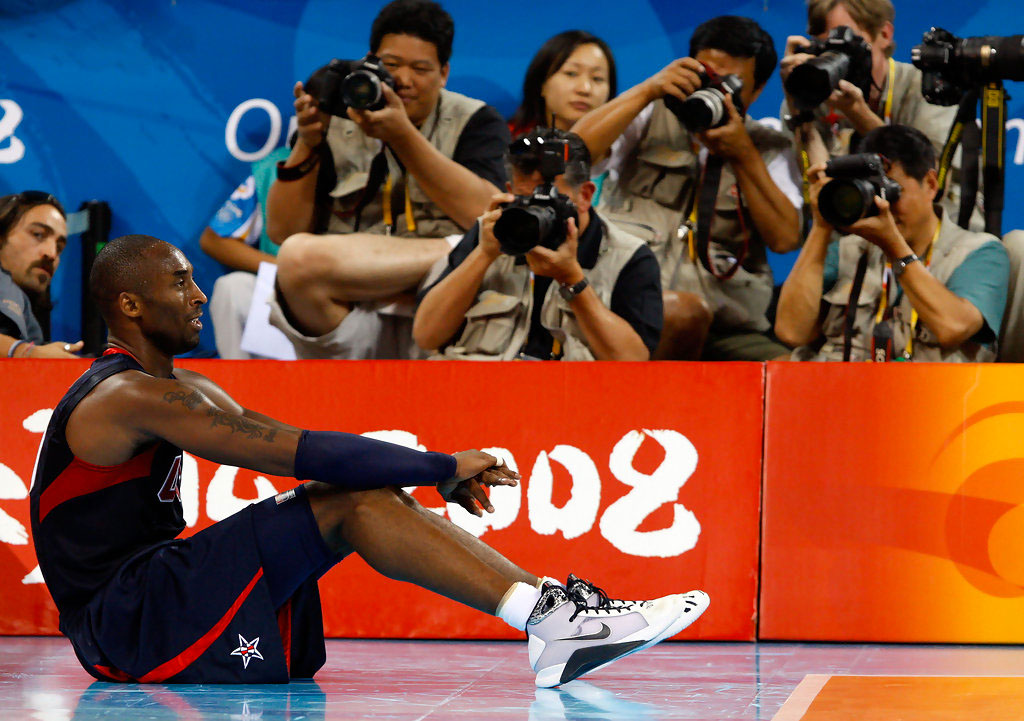 Image via Streeter Lecka
Image via Streeter Lecka
2008 was a big year for USA Basketball. The “Redeem Team,” led by Kobe Bryant, was on a mission to make things right after the 2004 squad failed to bring home the gold. On foot during the ‘08 games in Beijing for Kobe was the brand new Hyperdunk. Kobe had his signature line at this point, but he was a big part of the Hyperdunk’s rollout in Beijing. Designed by a Nike team led by Eric Avar, who was a legend at this point, the Hyperdunk was the lightest, best-performing sneaker on the planet. Most still agree that it is one of the best sneakers to hoop in ever.
With the debut of Flywire and Lunarlon foam cushioning, Nike continued to push the needle in terms of innovative technology. Kobe rocked the “United We Rise” colorway, which returned again in celebration of the Olympics in Rio.
2. Nike Flyknit Trainer (2012)
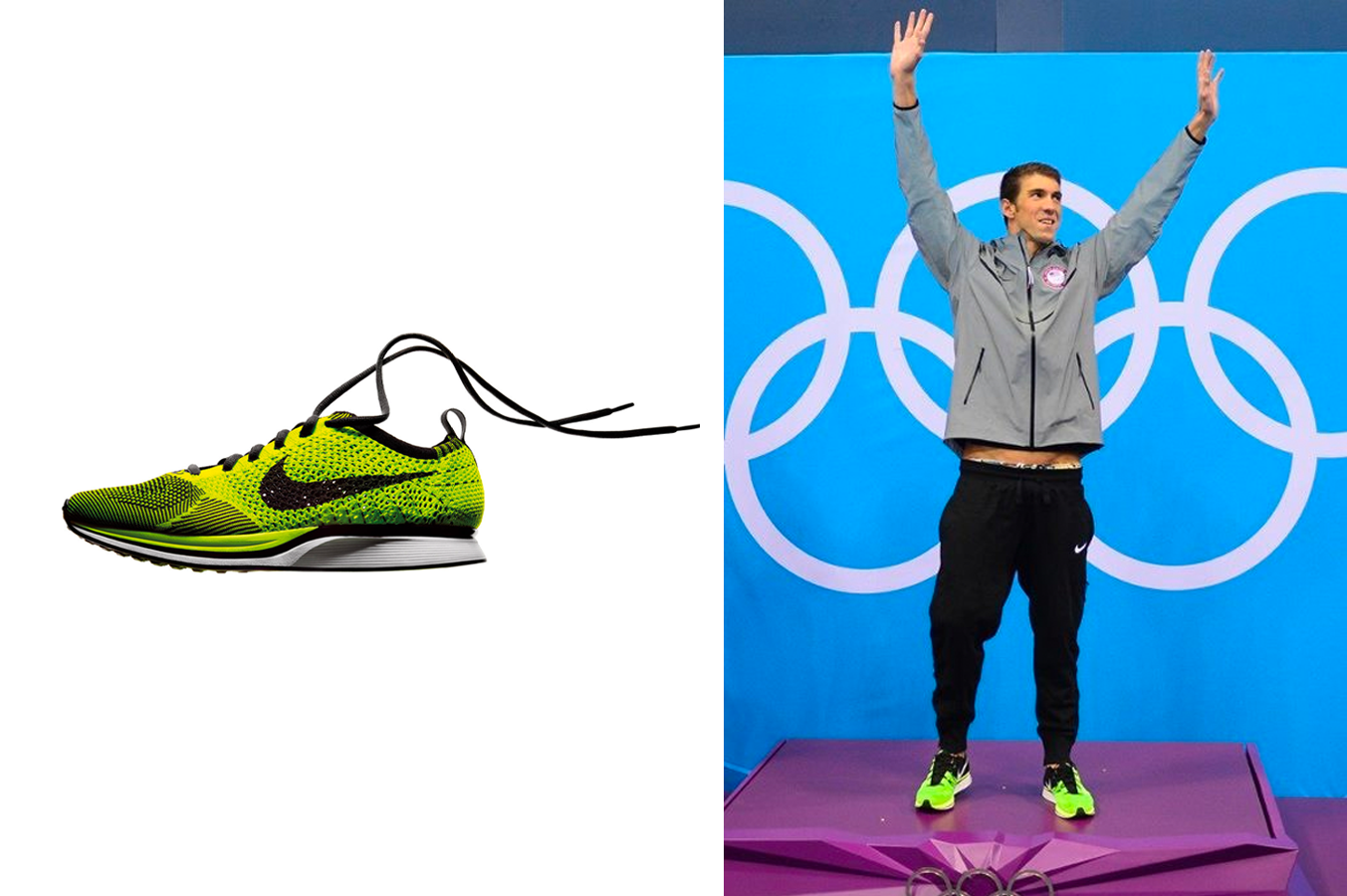 Images via Nike and AP
Images via Nike and AP
Beginning in 2012, Nike abruptly switched gears from the traditional red, white, and blue to much bolder colorways for athletes to wear on the medal stand. 2012 welcomed in the debut of the Flyknit series- Nike’s first shoes with a synthetic knit upper. The neon green Flyknit Trainer paired with the reflective flash track jacket was one of the most fire medal stand ‘fits of all time.
Nike was especially fortunate, as USA athletes won a total of 104 medals. The 46 gold medal count was the most the US ever won when they were not the host nation, which meant those Flyknits were visible to all the world to see on a nightly basis. Featuring a sock-like fit and a revolutionary fabrication technique that allowed structure and support to be knit into the shoe, the Flyknit Trainer also had Zoom Air cushioning. They also came in a Racer model, and both versions became incredibly popular for years to come.
1. Nike Free RN Flyknit (2016)
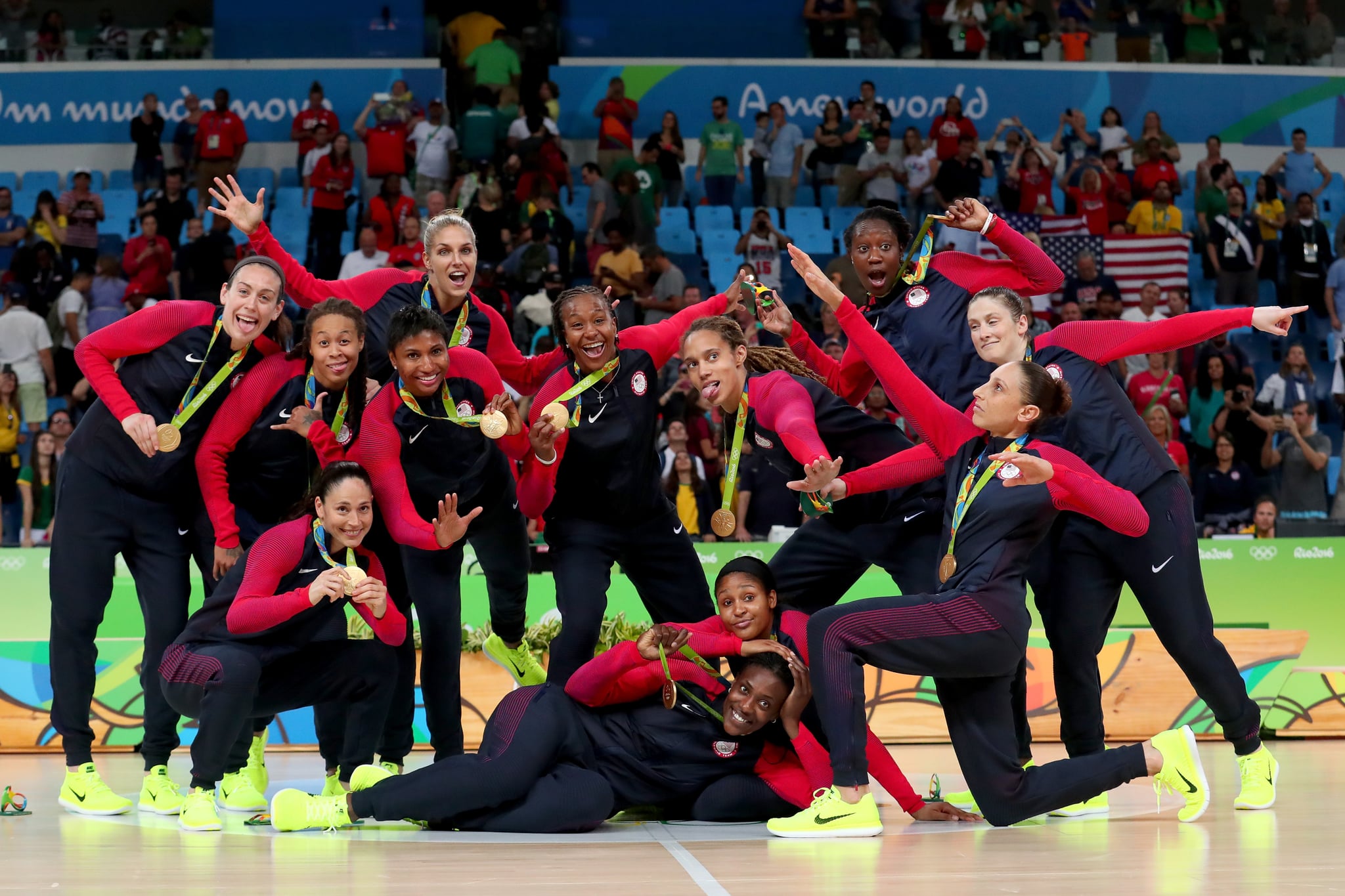 Image via unconfirmed
Image via unconfirmed
With the global success of the Flyknit line in 2012, it seemed inevitable that Nike would continue to build on that momentum with a follow-up version for the 2016 games in Rio. As the name suggested, the Free RN Flyknit utilized the popular Flyknit upper and another feature Nike was famous for: the Free sole.
While the Free RN Flyknit was not as popular as the 2012 Flyknit Trainer, it was still eye-catching with its bright Volt upper. The 2016 USA team delivered another memorable performance, with the third-most total medals of all time for America.
You can find Drew Hammel on Instagram via @drew.hammel and @nikestories.

